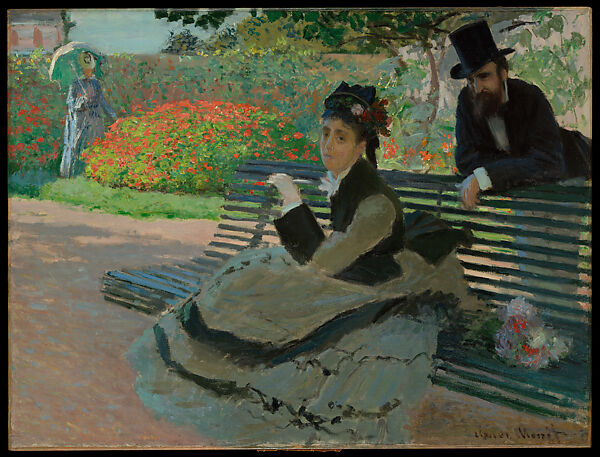When I wrote Now I Sit Me Down, a history of chairs and sitting, I included folding chairs, office chairs, and chairs on wheels, but I neglected park benches. I suppose I took them for granted. Whenever I go for a walk I often sit down on a park bench. They’re usually not very comfortable. Some are made out of heavy slabs of wood, to reduce maintenance, I suppose; more modern benches seem to be designed mainly to discourage loafing. As with much sitting furniture, you have to go back in time to find an exemplary design, in the case of benches, to mid-nineteenth century Paris. Jean-Antoine-Gabriel Davioud (1824-1881) was a prize-winning graduate of the École des Beaux-Arts who worked for the Paris planning department at the time that Baron Haussmann was remaking the city. Davioud designed fountains, arches, and gates, as well as those characteristic advertising columns plastered with posters that you can still see on Parisian boulevards. He was also responsible for two types of benches: the banc droit, or upright bench, a simple two-way facing bench with a shared back, and his wonderfully designed banc gondole. The gondola bench is made of thin wooden strips supported by cast iron frames. The ergonomic profile forms a sort of S-shape, with sinuous curves at the front and rear. Claude Monet painted his wife, Camille, sitting on a gondola bench in 1873 (not in a park, but in their garden at Argenteuil). No one has improved on Davioud’s design since.

